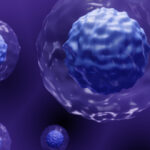Mobilized peripheral blood has now surpassed bone marrow as the preferred source of CD34+ hematopoietic stem and progenitor cells (HSPCs) for allogeneic hematologic transplantation and translational medicines because both the mobilization and collection procedures are far less invasive for donors with fewer side effects. Another benefit is that significantly more CD34+ cells can be isolated from a mobilized leukapheresis collection compared to bone marrow depending upon the mobilization and collection regimen.
During the procedure, healthy donors are given FDA-approved drugs to “mobilize” the HSPCs from bone marrow stem cell niche to enter the peripheral blood circulation. Following a multi-day drug regimen, leukocytes are harvested from the peripheral blood via leukapheresis. The mobilization treatment and leukapheresis process makes this material more accessible than bone marrow to accommodate a wide range of applications and timelines.
Key Mobilization Agents Used for Research and Therapeutic Applications
The cytokine G-CSF (Neupogen®) is the most frequently used mobilizing agent and has been the gold standard in the clinic for over 20 years1. It works primarily by downregulating the expression of the chemokine CXCL12 (also known as SDF-1), which binds to the CXCR4 receptor on HSPCs. Binding of SDF-1 to CXCR4 plays a key role in the retention of HSPCs in the bone marrow niche and disruption of this pathway results in the mobilization of HSPCs into the peripheral circulation. Although G-CSF is the most common mobilization agent, it has a 5-30% failure rate among healthy donors and patients3. The bicyclam molecule Plerixafor (Mozobil®) has been shown to effectively rescue the mobilization of HSPCs in individuals that fail to mobilize with G-CSF. Plerixafor acts directly on CXCR4 by blocking binding of SDF-1. While Plerixafor mobilization is more rapid compared to G-CSF, collections produce a lower yield of CD34+ cells2.
The combination of G-CSF plus Plerixafor works synergistically to increase the CD34+ mobilization when used together compared to single agent mobilization. This combination provides researchers the best chance of mobilizing large quantities of CD34+ cells across all donor types, which elicits a significant advantage over single agent mobilization and has become a new and important regimen for effective mobilization3. Our blog, Mobilized Peripheral Blood: Maximize Your CD34+ Yield, details the different mobilization regimens available at AllCells.
Additionally, reports show that the composition of CD34+ cells is dependent on the mobilization regimen and the tissue source. Key differences in CD34+ characteristics across different tissue sources (bone marrow, mobilized peripheral blood, and cord blood) are outlined in a previous FAQ Series. G-CSF (AllCells’ RegF), plerixafor (MozA-D options), and plerixafor plus G-CSF (RegH) mobilize different populations of CD34+ cells, but whether these differences are significant will largely depend on the research application. Researchers are encouraged to search the published literature to determine if their HSPC activity or function of interest is influenced by the mobilization procedure, however some key differentiators are:
- The number of total nucleated cells including B cells, CD4+, CD8+, and CD34+ cells mobilized by G-CSF plus Plerixafor is significantly greater than either agent alone4,5
- Mobilization with G-CSF and Plerixafor mobilized more primitive progenitor cells with a high repopulation capacity6
- CD34+ cells mobilized by G-CSF and Plerixafor were more likely to express B-cell and T-cell genes indicating that a greater proportion of B- and T-cell precursors are present in these collections compared to either G-CSF or plerixafor alone4,5
- An increased number of regulatory cells such as Tregs (especially naive CD45RA+ regulatory T cells), monocytes and dendritic cells is observed in G-CSF plus Plerixafor collections5
G-CSF and Plerixafor (RegH) Enhances CD34+ Yield
At AllCells, Mobilized Leukopaks are collected from qualified, IRB-consented healthy donors at our FDA-registered, IRB-approved, AABB-compliant donor centers using state-of-the-art apheresis equipment, optimized mobilization protocols backed by extensive clinical expertise. The combination of G-CSF and Plerixafor provides leukapheresis collections with the highest CD34+ content compared to single-agent mobilization regimens. On average, AllCells’ RegH (Figure 1) yields 120% more CD34+ cells than Reg F (G-CSF alone) collections. Together with the bulk cell isolation services that are performed onsite after collection, researchers can obtain CD34+ cells with high cell viability and yield from a single donor to streamline workflows. CD34+ enumeration is performed using gold standard protocols for accuracy and consistency. Having AllCells perform the leukapheresis and isolation of CD34+ cells saves time and resources, liberating in-house personnel to focus on other priorities in the lab that require their expertise and skill.

Figure 1. AllCells’ Mobilization Regimen H: Filgrastim (Neupogen) 10ug/kg/day x 5 days + Plerixafor (Mozobil) 240ug/kg/day x 2 days on day 4 and 5 (evenings), apheresis on day 5 and 6
In addition to research use only (RUO) Mobilized Leukopaks, AllCells now offers GMP RegH Mobilized Leukopaks to support a project’s entire continuum – from basic research to commercialization. Access to a quality controlled, scalable supply of donor CD34+ cells, from RUO to GMP, provides a robust foundation to execute a wide variety of studies that can accelerate the development and commercialization of novel therapeutics.
Request a quote or learn more about AllCells’ RUO Mobilized Leukopaks or GMP Mobilized Leukopaks.
References
- Theyab A, Algahtani M, Alsharif KF, et al. New insight into the mechanism of granulocyte colony-stimulating factor (G-CSF) that induces the mobilization of neutrophils. Hematology. 2021;26(1):628-636. doi:10.1080/16078454.2021.1965725
- To LB, Levesque JP, Herbert KE. How I treat patients who mobilize hematopoietic stem cells poorly. Blood. 2011;118(17):4530-4540. doi:10.1182/blood-2011-06-318220
- Fruehauf S, Tricot G. Comparison of unmobilized and mobilized graft characteristics and the implications of cell subsets on autologous and allogeneic transplantation outcomes. Biol Blood Marrow Transplant. 2010;16(12):1629-1648. doi:10.1016/j.bbmt.2010.02.002
- Donahue RE, Jin P, Bonifacino AC, et al. Plerixafor (AMD3100) and granulocyte colony-stimulating factor (G-CSF) mobilize different CD34+ cell populations based on global gene and microRNA expression signatures. Blood. 2009;114(12):2530-2541. doi:10.1182/blood-2009-04-214403
- Teipel R, Oelschlägel U, Wetzko K, et al. Differences in Cellular Composition of Peripheral Blood Stem Cell Grafts from Healthy Stem Cell Donors Mobilized with Either Granulocyte Colony-Stimulating Factor (G-CSF) Alone or G-CSF and Plerixafor. Biol Blood Marrow Transplant. 2018;24(11):2171-2177. doi:10.1016/j.bbmt.2018.06.023
- Fruehauf, S et al. “A combination of granulocyte-colony-stimulating factor (G-CSF) and plerixafor mobilizes more primitive peripheral blood progenitor cells than G-CSF alone: results of a European phase II study.” Cytotherapy. Vol. 11, 8 (2009): 992-1001. doi: 10.3109/14653240903121245




